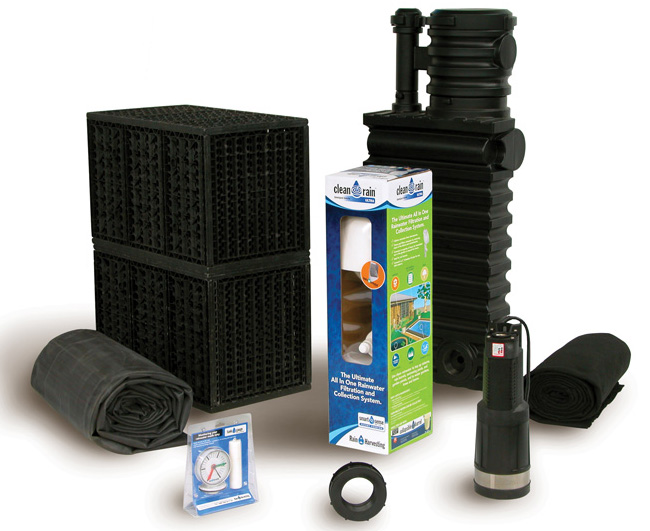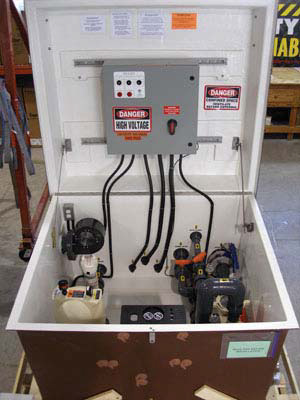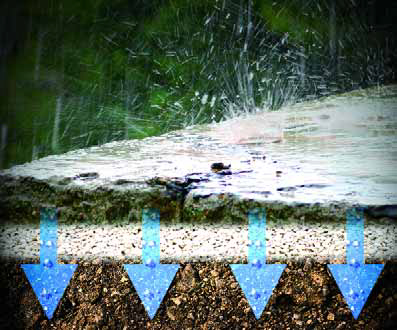rainwater harvesting
Aquascape (St. Charles, IL) has published its 2016 Product Catalog. The 104-page digital booklet covers…
Atlantic Water Gardens (Mantua, OH) has assembled rainwater-harvesting kit that include either submersible or external…
Roman Fountains (Albuquerque, NM) has released a four-page brochure filled with information on its systems…
Back in January 2009, WaterShapes ran a big article on the team effort involved in installing the first-generation rainwater-harvesting system developed by the folks at Aquascape (St. Charles, Ill.). Ed Beaulieu’s article (linked below) went into great detail on how everything came together, so I won’t duplicate that information here. But I feel obliged to stress the point that a
Oddly enough, this story takes place in a down economy and shows how, despite perceived financial limitations, something surprising and wonderful can happen when people put their minds to it. For years now, my work at Aquascape (St. Charles, Ill.) has largely focused on developing, designing and installing systems that in one or more ways are environmentally sound and beneficial. In early 2009, I began working on a plan for a prototype community designed around optimal use of its resources, especially water. I imagined a town filled with rainwater-capturing systems, permeable surfaces and efficient irrigation. It included nothing but indigenous plants, was organized with minimal turf areas and set aside space for composting and cooperative organic farming. As for the homes, all of them boasted various resource- and energy-efficient features. The overall concept was so
I’ve taken up a fair amount of my column space in WaterShapes with discussions of the wise use of water, and for good reason: What could be more important to watershapers than knowing how to make the best possible use of the material that defines our profession? And what could be better than the fact that it’s possible to approach the subject in positive ways that bode well for the future? The common thread in all of this coverage – whether it’s about conservation, constructed wetlands or rainwater harvesting – is that, ultimately, our aim must be to
In recent centuries, watershapers have done a tremendous job of figuring out how water behaves in visual and aural terms and learned how to use those characteristics to make strong aesthetic impressions. Now that we’re entering an era in which environmental concerns are of increasing importance, however, we’re being challenged to think differently about water, how it affects us physically and the essential role it plays in maintaining a healthy world. That challenge is not insubstantial: As a species, we’ve done a great deal to squander water as an asset, whether by contaminating and otherwise polluting natural bodies of water or by treating pools and other watershapes with harsh chemicals. Isn’t it ironic that spas, which exist primarily so we can
The numbers are eye-popping: Just about one percent of all the water on Planet Earth exists as freshwater suitable for human consumption. And depending on where you live in the United States, anywhere from a quarter to almost half of that precious resource is used for irrigation. This is why it’s so important for those of us who design watershapes and exterior environments to consider options that minimize our use of potable water to maintain the landscape – and why I’m glad I picked up a copy of Rain Gardens by Nigel Gunnett and Andy Clayden (Timber Press, 2007): This 190-page text defines specific steps we can all take to replace municipal or well water with rainwater, capturing a gift from the skies and using it to sustain our landscapes. As the authors point out, we live in a time when drought is






















2011/4.1, April 13 — Pond Liners, Rainwater Capturing, Book Notes and more